We found that many of the old dead trees that had served as roosts for larger birds such as raptors and herons had been knocked down.
This was one of the few relicts. I called it the "stork tree." It finally toppled in 2010.
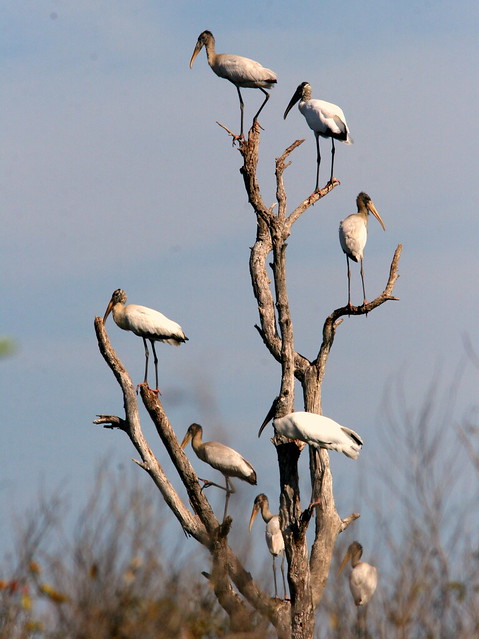
One snag felled by Wilma took down a power pole from an abandoned line that crossed into the wetlands, and wires draped across our path. The power company removed most of the wires but left a single one that sagged down to about 15 feet over the path but was not obstructing access.
The favored perches were rather distant, so my photos are generally of poor quality. This is the second pole out from the path. A Red-shouldered Hawk is barely recognizable on the third, and Common Grackles occupy the nearer pole.
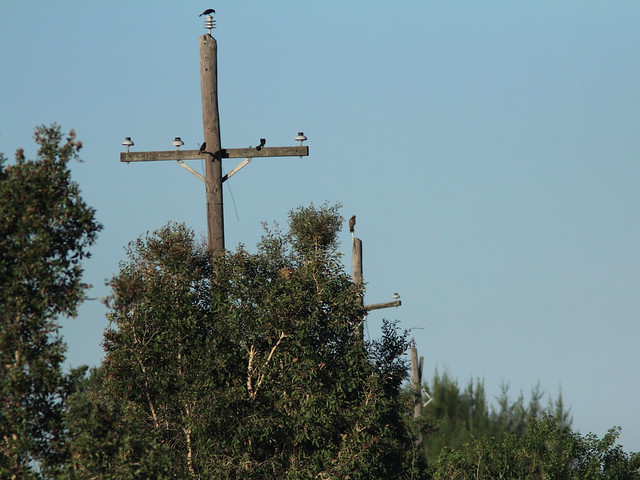
Without the old trees, the power poles became especially attractive to Ospreys that nested in a grove of exotic Melaleuca trees at the far northern extent of the preserve. Here, a Belted Kingfisher looks down at an Osprey on the pole nearest to the path.
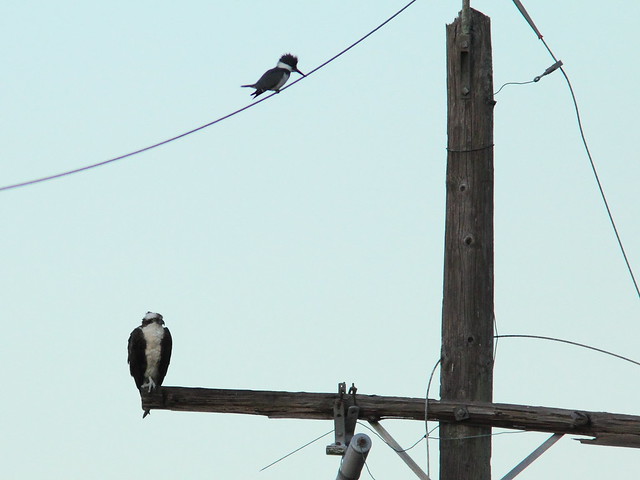
Over the past seven years the wire provided a perch for quite a variety of birds. I recently took this photo of an unlikely association between an American Kestrel and a Loggerhead Shrike, not knowing that the wire would be taken down the next day.
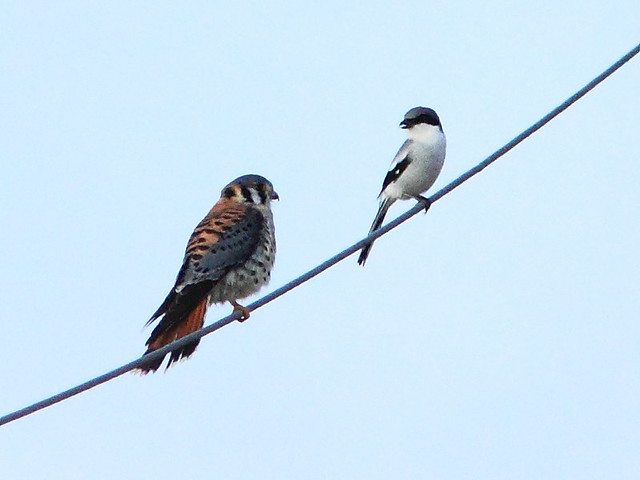
A year ago I caught them sitting almost shoulder-to-shoulder!
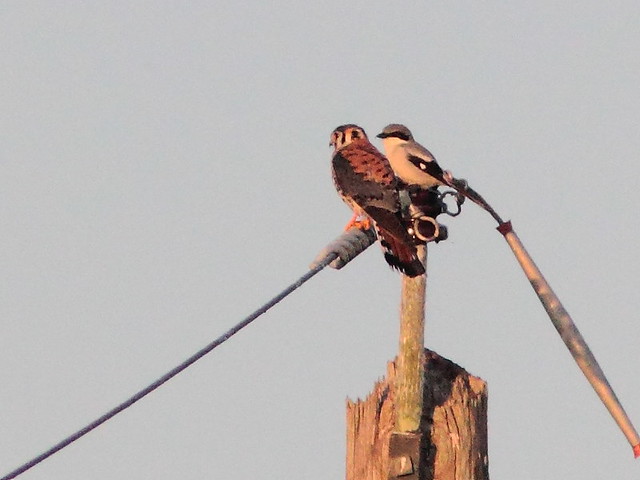
A pair of Northern Flickers also shared the wire with a kestrel.
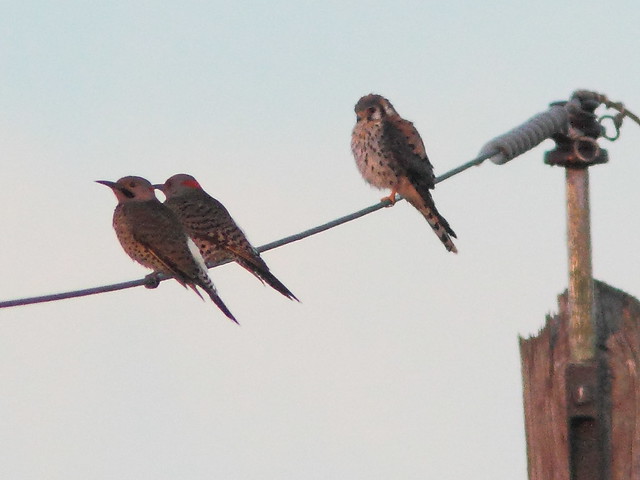
Once there was an odd gathering of a kestrel, a kingfisher and two shrikes.
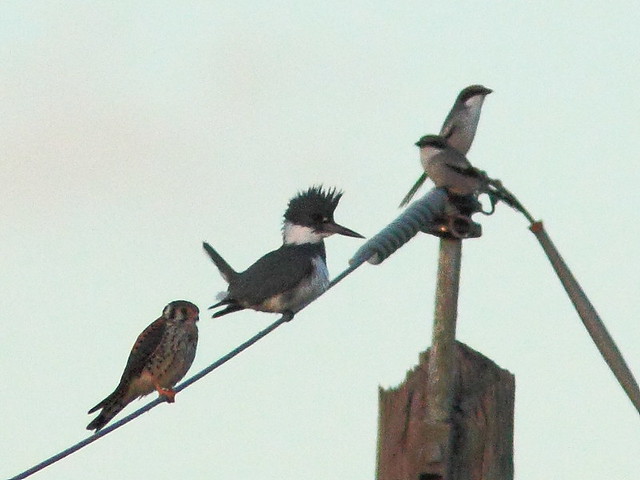
Red-winged Blackbirds liked to sing from the wire.
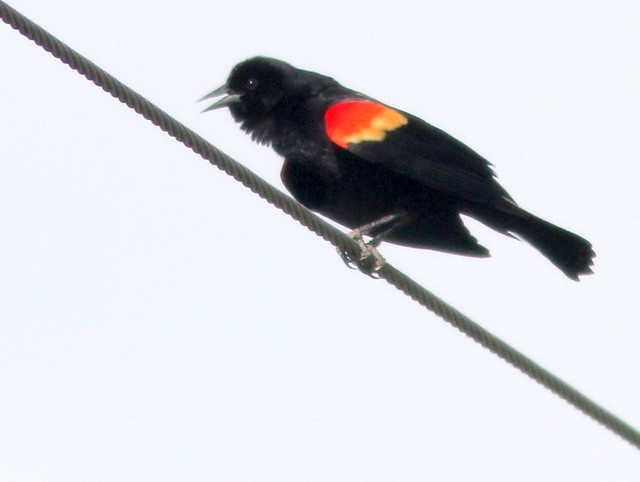
For a little variety, a blackbird was joined by a Northern Mockingbird, a female flicker and a male kingfisher.
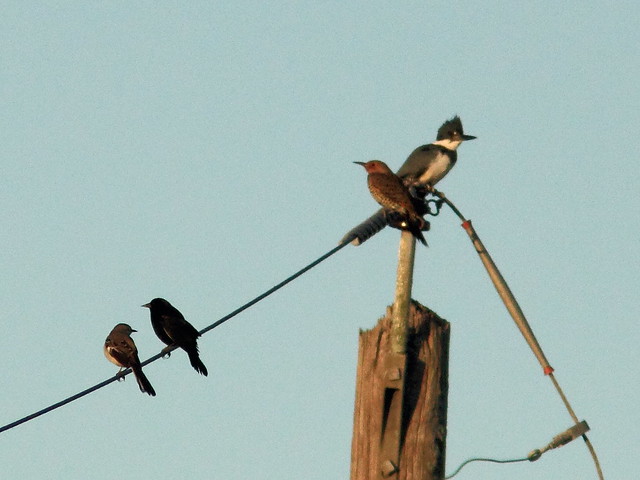
A male flicker joined this shrike.
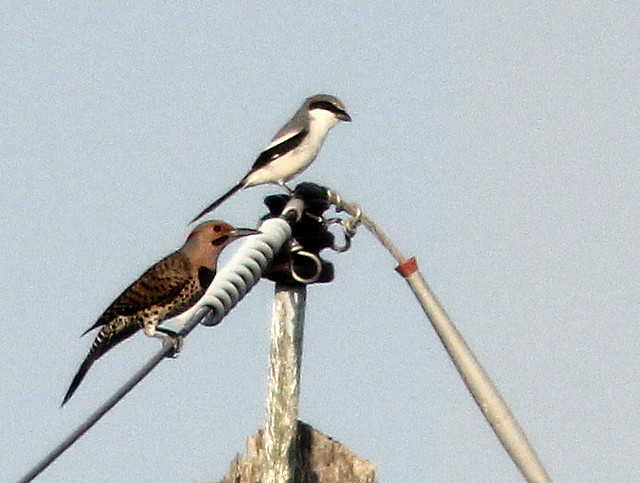
A pair of Red-tailed Hawks conducted their courtship on the pole.
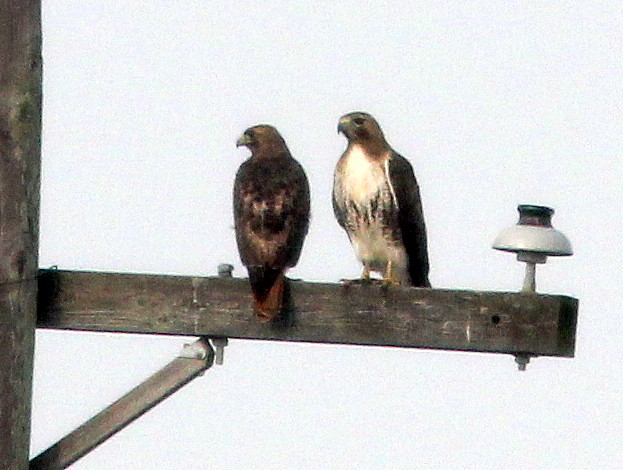
Doves were well-represented, including this Mourning Dove...
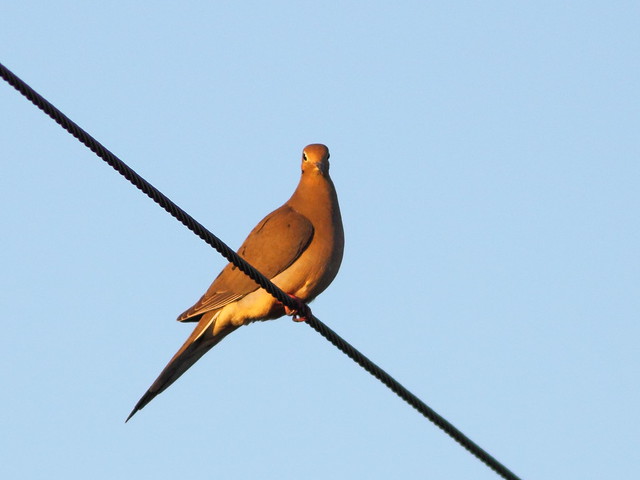
...a Common Ground-Dove...

...and a White-winged Dove.
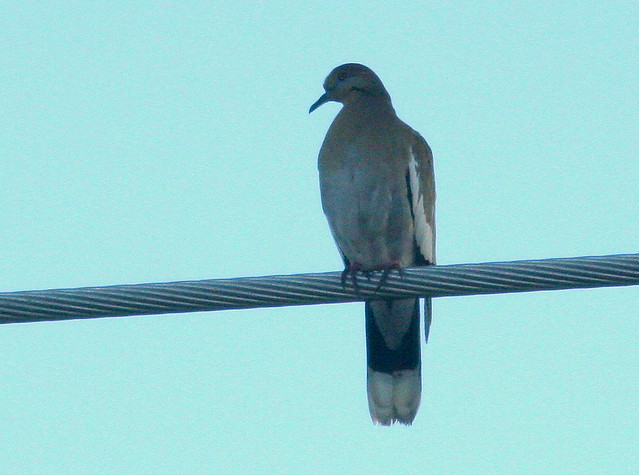
An unusual occupant was this Common Nighthawk. They usually do not perch crosswise, and prefer a tree limb to a wire.
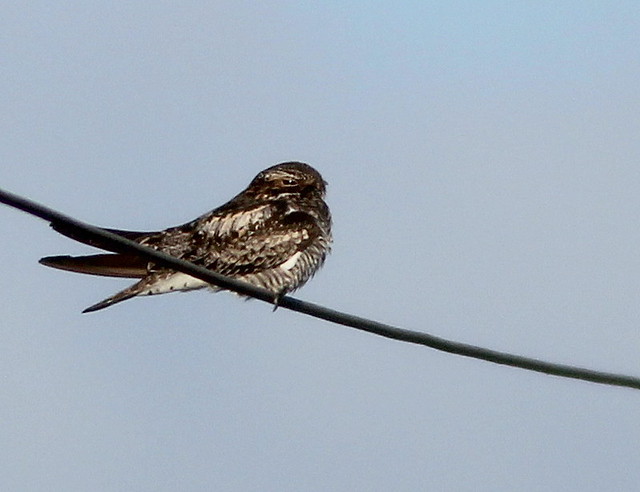
A bald Eagle passed by closely but did not stop.
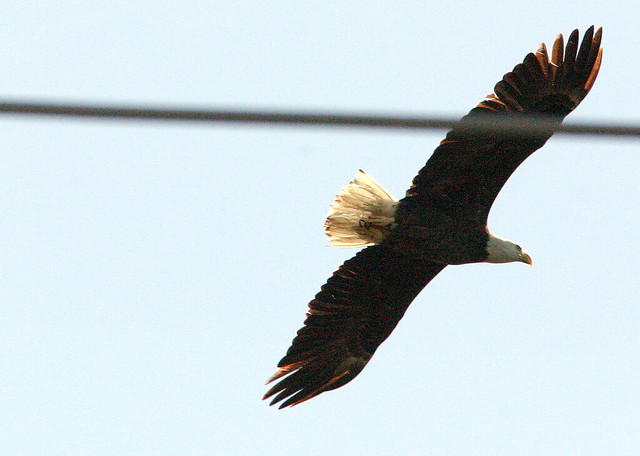
All in all, I have tallied a total of over 20 species on the wire and adjacent poles. Other species that I have seen on the wire have been Eurasian Collared-Doves, Boat-tailed Grackles, Starlings, Fish Crows, a Northern Cardinal, Monk Parakeets, and of course, Blue Jays.
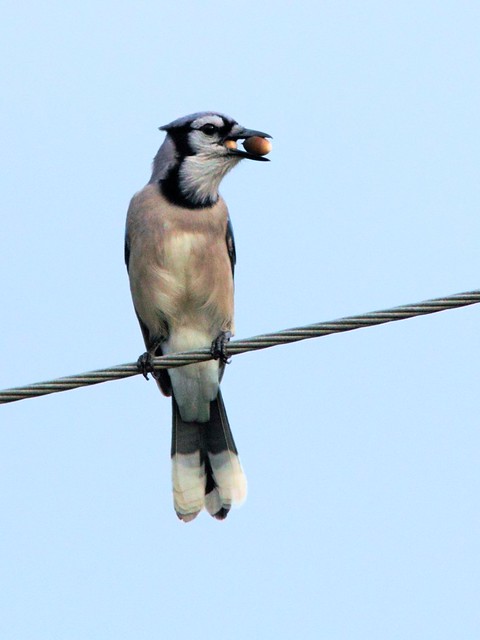
The power company had no choice but to remove the inactive wire, as the pole that supported its other end had to be removed and replaced by a new and taller one. Now the wire rests under the pole, neatly stowed and carrying only memories the many birds that swayed with it in the wind.
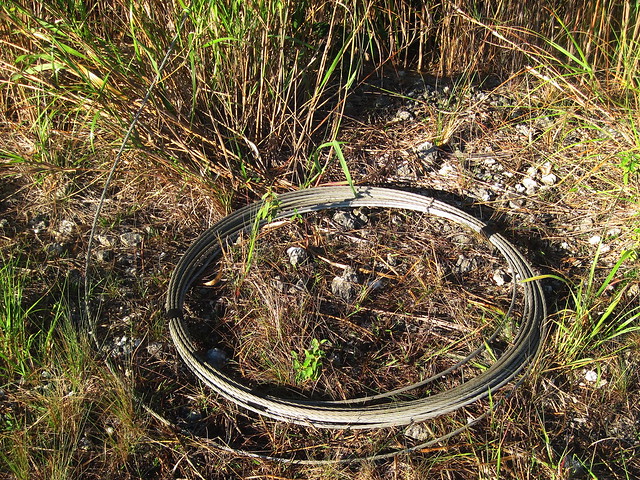
Now my concern turns to the fate of the old poles that course into the wetlands. Two years ago, Ospreys nested in this Meleleuca grove across the wet prairie, but this spring it was treated with herbicides and every tree was killed. Their ghosts now line the northern boundary of the preserve, eventually to be cut and removed for a highway right-of way.

I never found the actual nest (the only access is over private land), but saw the Ospreys bringing prey into an area about one third of the way down from the far end of the grove of now defoliated and dead trees. Might it be possible for the "powers that be" to allow the old telephone poles to stand, and serve as hosts for one or more Osprey nest platforms? I fear that I am assigning myself another mission.
sounds like a worthy effort, though. loved this mix of birds - especially when they shared space!
ReplyDeleteSome amazing shots there Ken. Those diverse species all sitting so close together on the telegraph wire - in particular the kingfisher, the kestrel and two shrikes so close together looks almost contrived but certainly a little bizarre. Maybe they are getting a kick out of whatever vibrations buzz along the line? Thanks for tipping me off about the Facebook page by the way. Best wishes for the season and 2013.
ReplyDeleteWow, it is amazing seeing all these birds sharing the same space. Wonderful sightings, Ken!
ReplyDeletei love the stork tree!
ReplyDeleteWonderful how different kinds of birds can adapt to one another's space - except if food is involved. So love the stork tree! Like Nature's living Christmas tree!
ReplyDeleteWhat an amazing sight. Ken, I must admit I'm a little green with envy. :)
ReplyDeleteGreat shots!
Amazing photo essay on "birds on the wire" Ken! A couple of astonishing shots to me were the Common Nighthawk on a wire and the American Kestrel and Northern Shrike together. Do you suppose the kestrel and shrike were discussing who would pounce on the next prey spotted by both of them? Whenever I think of birds on a wire it brings to mind the old Leonard Cohen song, sung by Judy Collins. Have a very Merry Christmas and a healthy, happy and prosperous New Year Ken! Oh, it sounds like an excellent mission to save the poles but what are they doing putting a highway through a wildlife preserve that was set up to mitigate taking land elsewhere in the first place?
ReplyDeleteVery interesting to see the different birds perching so close. Birds put up with so much from the damage humans cause. I hope some of the poles are left for the birds. Best wishes for the season!
ReplyDeleteThese are really incredible findings and shares. Merry Christmas~
ReplyDeleteMerry Christmas, everyone! Gemma, I wasn't thinking of the stork tree as a Christmas tree, but it is a wonderful one! Larry, I just learned that "Bird on a Wire" was Judy Collins' first recording. The highway will run along the eastern and northern perimeter of the conservation area, but it does cut across its northern extension. Despite most of this land having been set aside as a perpetual preserve, the plan to restore the Everglades sheet flow includes turning the entire area into a reservoir. They are required to find other wetlands to be set aside as compensation. There is no land left anywhere around here, so it will likely be somewhere upstate, even hundreds of miles away, if this is ever accomplished. I could write a book, but I may start with a blog or series of blogs on this complicated and interesting issue. I'm all for Everglades restoration and see that this is necessary to keep water from being wasted through seepage into canals that connect directly with the ocean. More later...
ReplyDeleteGreat set of pictures - makes you realise how important perching points are to birds - and that we can be over tidy in out approach to nature.
ReplyDeleteCheers and thanks for lining to WBW.
Stewart M - Melbourne
great captures and how very interesting the differing species getting along together
ReplyDeleteI hope you're successful!! Boom & Gary of the Vermilon River, Canada.
ReplyDelete